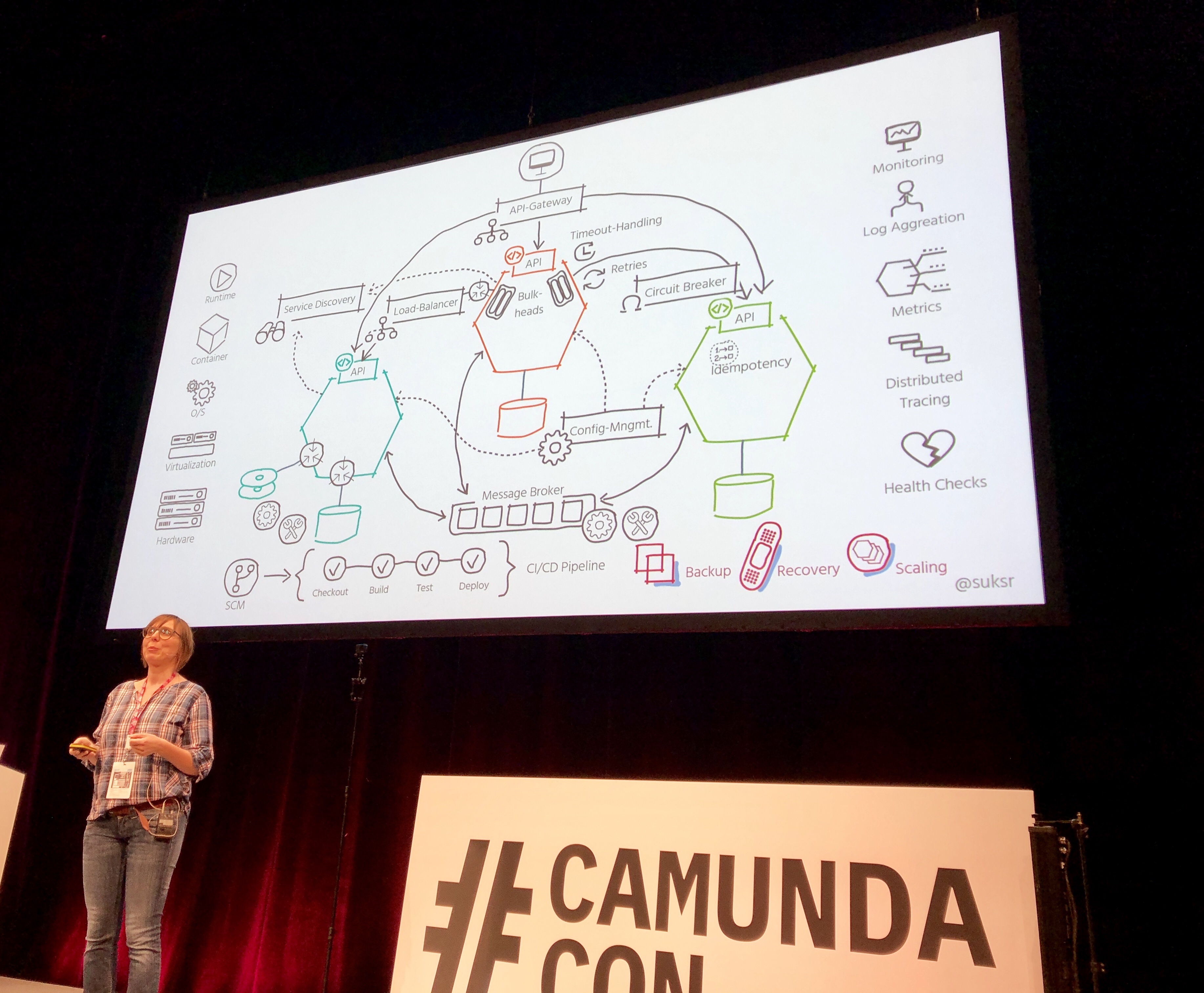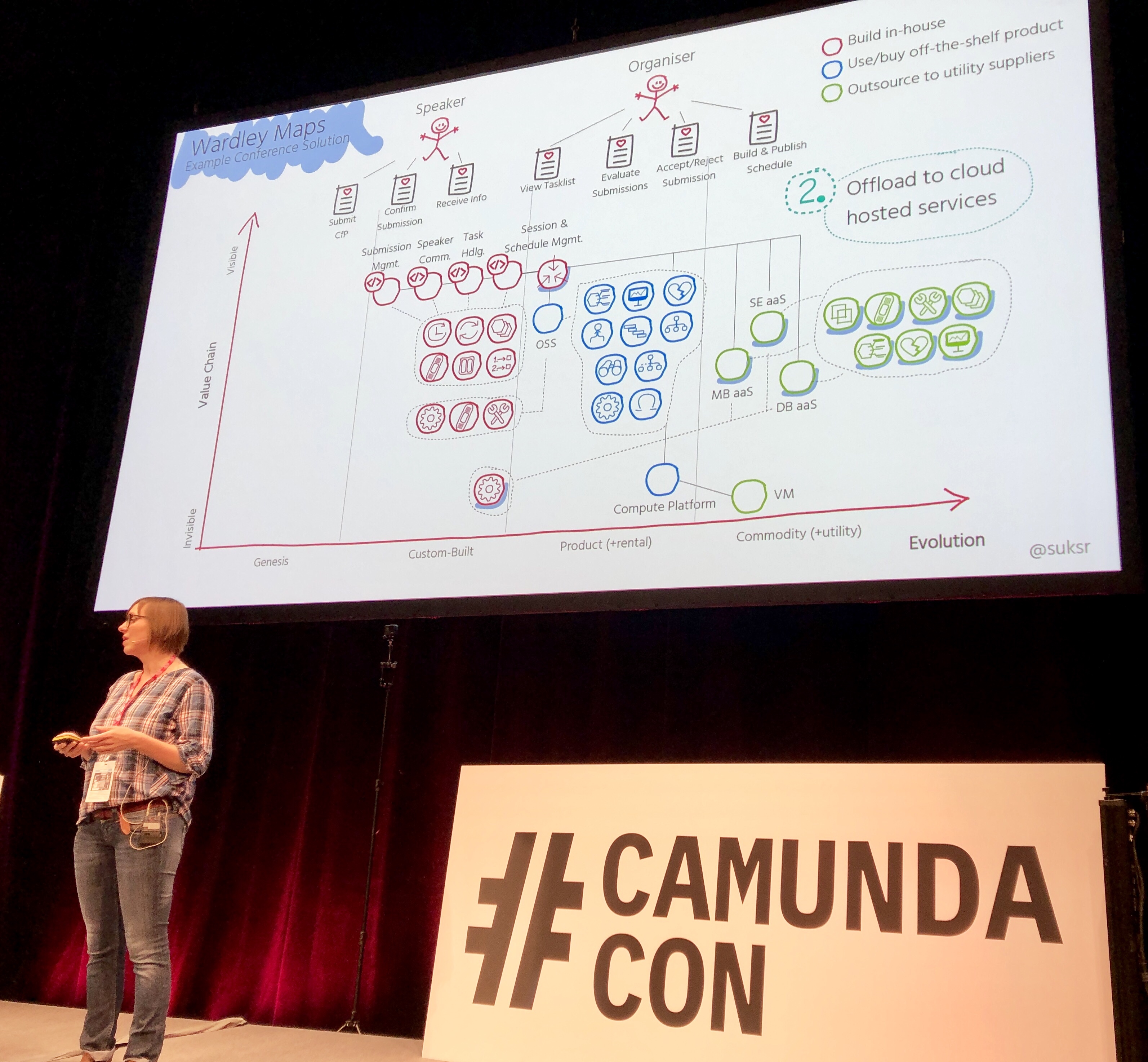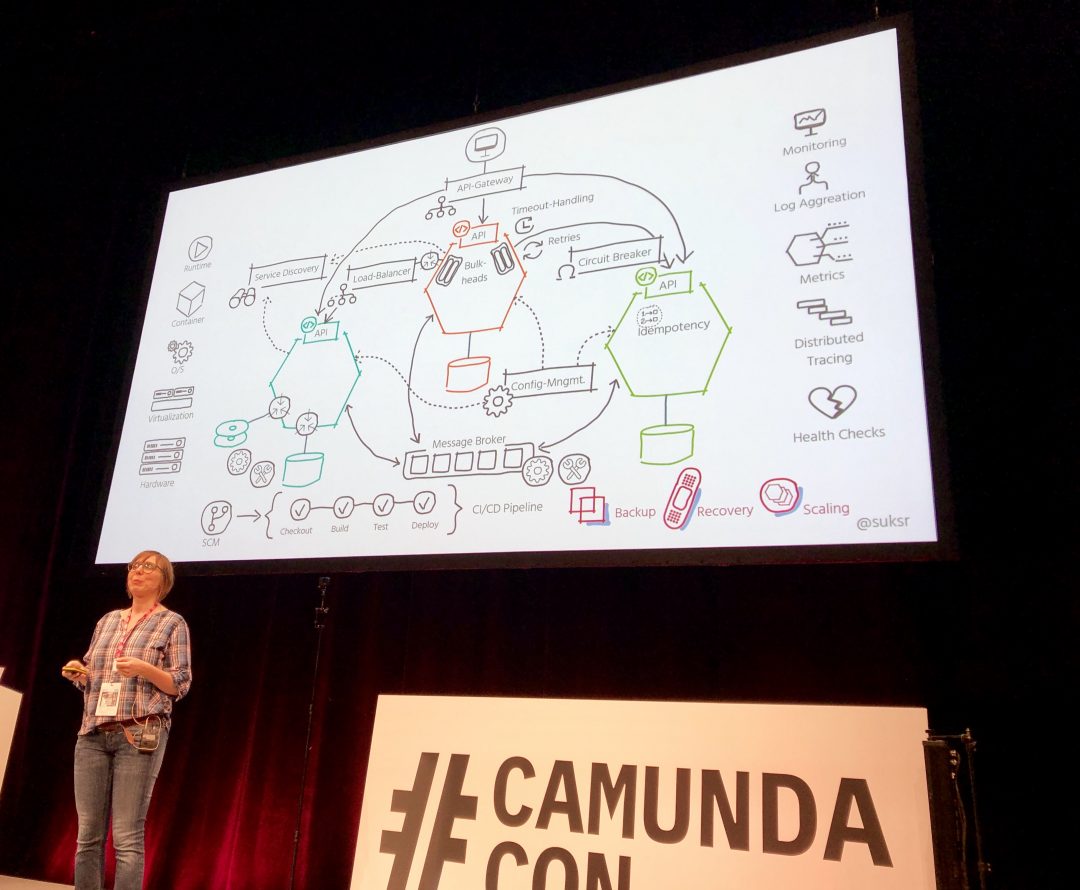CamundaCon 2019: Preparing for a microservices journey with @suksr
Blog: Column 2 - Sandy Kemsley
Susanne Kaiser, former CTO of Just Social and now an independent technology consultant, opened the second day of CamundaCon 2019 with a presentation on moving to a microservices architecture, particularly for a small team. Similar to the message in my presentation yesterday, she advises building the processes that are your competitive differentiator, then outsourcing the rest to external vendors.
She walked through some of the things to consider when designing microservices, such as the ideas of bounded context, local data persistence, API discovery and management, linkage with message brokers, and more. There’s a lot of infrastructure complexities in building a single microservice, which makes it particularly challenging for small teams/companies — that’s part of what drives her recommendation to outsource anything that’s not a competitive differentiator.

She showed the use of Wardley maps for the evolution of a value chain, showing how components are mapped relative to their visibility to users and their level of maturity. Components of a solution/system are first identified by their visibility, usually in a top-down manner based on the functional requirements. They are then plotted along the evolution axis, to identify which will be custom-built versus those that are third-party products or outsourced commodities/utilities. This includes identifying all of the infrastructure to support those components; initially, this may include a lot of the infrastructure components as requiring custom build, but use of third-party products (including open source) can shift many of these components along the evolution axis.

She then showed how Camunda BPM would fit into this map of the solution, and how it can abstract away some of the activities and components that were previously explicit. In short, Camunda BPM is a higher-level piece of infrastructure that can handle service orchestration including complexities of retries and more. I haven’t worked with Wardley Maps previously, and there are definitely some good concepts in here for helping to identify buy versus build components in a technical architecture.
Leave a Comment
You must be logged in to post a comment.








